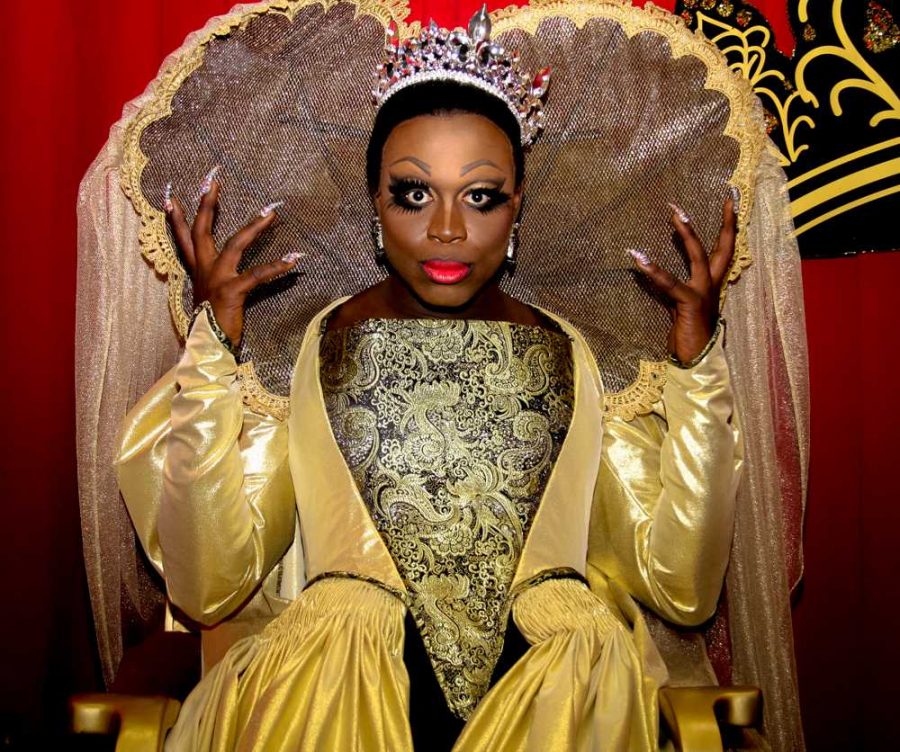Drag is not a new phenomenon. Wearing clothes of the opposite sex as a form of entertainment can be traced back to Shakespeare’s era when male actors had the task of playing the female characters in theater. As the world evolved, so did drag. Cross-dressing became a comedic act seamlessly adopted by the mainstream pop culture, evidenced by movies such as “Mrs. Doubtfire,” “Tootsie” and “She’s the Man.” As drag served as the punchline in sitcoms, it developed into an art form inside the dingy underground ballrooms where gender roles became irrelevant.
Fortunately, this art form now has a bigger platform than ever thanks to RuPaul Charles, who is, as his album title suggests, the Supermodel of the World. He did not invent drag, but somehow he was able to break into the mainstream consciousness with his hit song “Supermodel” and now with his reality show moving to VH1. Drag culture has seeped into our everyday interactions with terms such as “shade” or phrases like “spilling the tea.” Meanwhile, RuPaul’s Drag Race has grown into a worldwide phenomenon that has grabbed the attention of not only the LGBTQ+ community but also the ever-growing demography of straight young women, like myself.
As a feminist, the over-the-top display of female stereotypes in drag might seem jarring and can be interpreted as misogynistic by some. The truth is that drag queens are inspired by female icons, and their performances are meant to be empowering. They do not intend to mock femininity, but rather to challenge the toxic masculinity that continues to poison young men. RuPaul’s television competition “Drag Race” provides a portrayal of a different kind of masculinity, which incorporates vulnerability and community. Drag queens are not an affront to women. They are more than just men wearing sparkly dresses. Drag queens are members of the LGBTQ+ community who are embracing the same hyper-femininity that is always regarded as inferior in our patriarchal society. Drag culture thrives on the notion that femininity is a strength rather than weakness, and drag queens embody the message of nonconformity in every performance.
The glitter and glamour that exude from the drag queens are visually stimulating from an artistic viewpoint, and the struggles and pain these queens are willing to share on live television connects with the audience in a way that few reality shows are able to do. The reason for this is that drag is an art form inherently political and uninhibited. It is unbounded by societal norms. It might be hard to discern the “punk” quality of drag at first glance due to those bigger-than-life gowns and sculpted cheekbones, but believe me, it is there. Drag is a loud and unabashed rejection of masculinity in a society that has historically always been male-dominated. Drag is born out of the creativity and the oppression of marginalized groups that have rarely found their place in the mainstream culture. RuPaul’s “Drag Race” does not shy away from conversations that might be uncomfortable for the wider audience. Scripted or not, the contestants are candid when it comes to exposing their deep insecurities and fears.
But the show is far from perfect. It fails to recognize the immense contributions of transgender women to drag culture. It is almost oblivious to the prominent racism in the LGBTQ+ community. Unfortunately, the fame and fortune drag queens enjoy are a direct result of the objectification of the female form by popular culture. Nevertheless, Rupaul’s “Drag Race” is a show that is more intersectional than anything else on television. It is a show that has enriched my feminism with inclusivity. Beyond the glitter and the contour, the drag queens are living, breathing statements of the nonconformity capable of spurring revolutions.


